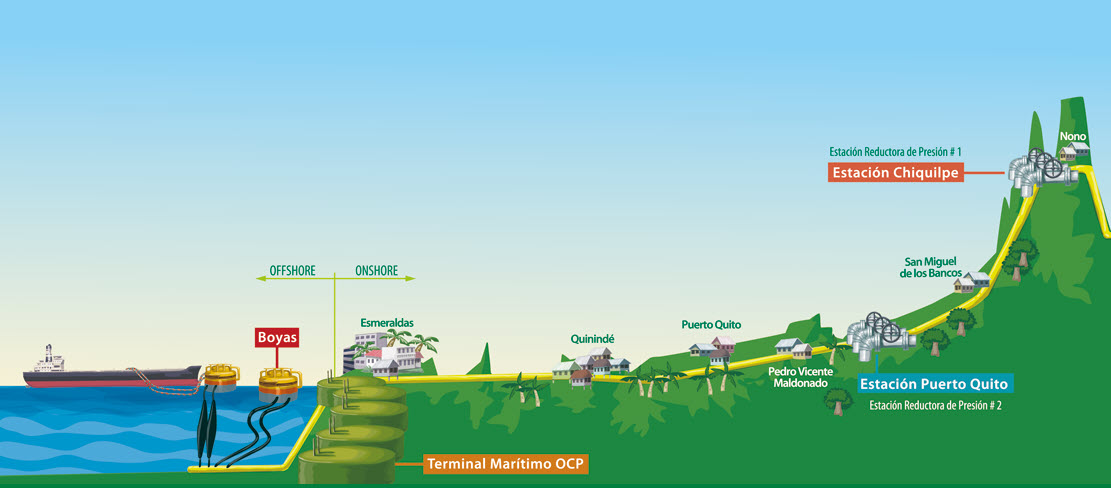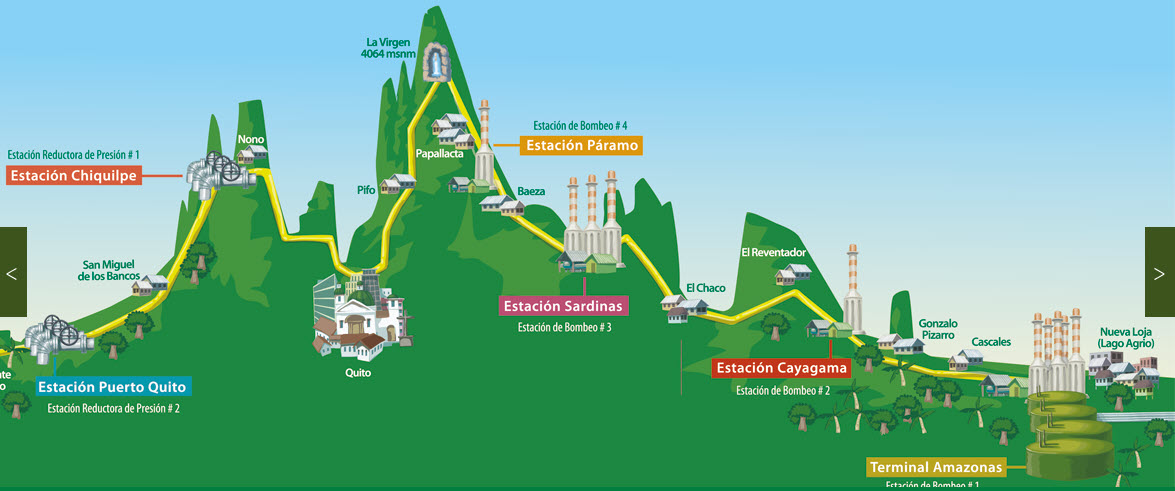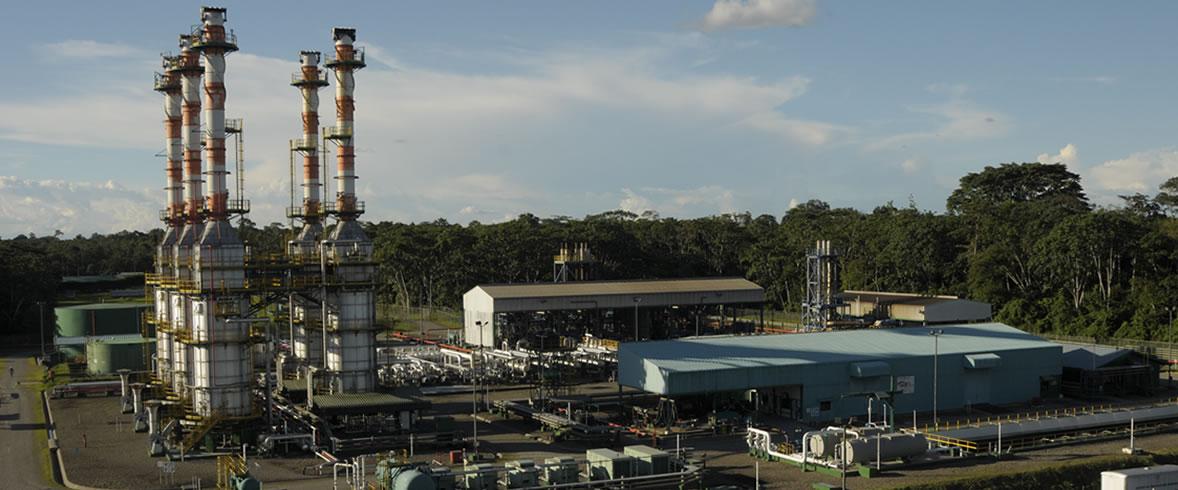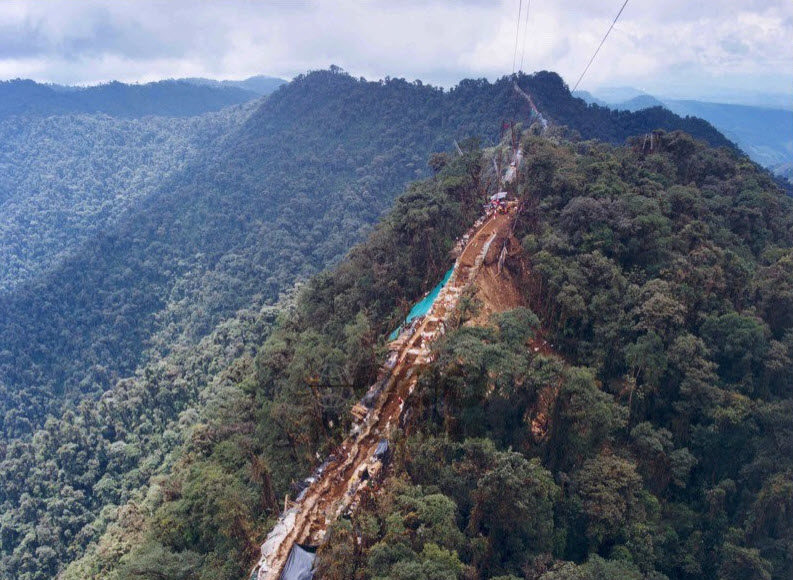2. The Ecuadorian government: friend or foe?
On July 10 2018, two courts, over 2,800 miles apart, came to diametrically opposite conclusions about one of the worst cases of environmental pollution in the twentieth century. In Quito, Ecuador, the Constitutional Court upheld a ruling that the giant US corporation Chevron Oil was responsible for the catastrophic pollution of a vast area of Amazon rain forest between 1971 and 1992. In New York, the state Supreme Court found that Steve Donziger, one of the principal US lawyers representing those affected by the pollution, was guilty of perverting the course of justice in this case, and debarred him indefinitely from practising as a lawyer. Chevron hailed this as a victory. “We’re going to fight this until hell freezes over … And then we’ll fight it out on the ice”, said a Chevron spokesman in 2009. The company has done just that. Meanwhile, the Lago Agrio region of Ecuador remains severely polluted, the victims remain uncompensated, and environmental defenders throughout the world must contemplate the terrifying consequences of taking on companies and governments responsible for blatant crimes against the natural world. In this second article of her three-part series, Linda Etchart looks at the actions and omissions of successive Ecuadorian governmentsEcuador is not alone in having viewed its substantial oil resources as a ‘free’ resource to be tapped to provide a source of easy cash to be used for a wide range of purposes, whether socially useful (education, health and public transport), arguably wasteful (vanity construction projects), militaristic (arms purchases and territorial expansion) or simply corrupt (the enrichment of ministers, political parties and élites). Peru, Chile, Bolivia, Brazil, Venezuela, Mexico – most of the countries of the region have succumbed to the temptation of extractivism, under governments of the right, centre and left. Invariably their own capital and technological resources have not been adequate to the task and the solution has been to turn to the vast oil and mining companies (mostly US, Canadian or European, and latterly also Chinese) with the cash, skilled staff and equipment to do the job. Like other developing countries who find themselves with the ‘gift’ or ‘curse’ of natural resources, Ecuador was under pressure from the International Monetary Fund (IMF) to exploit its oil reserves. By the year 2000, foreign debt had reached US$15 billion, and the country required an IMF loan of US$300 million. This was a prerequisite for a further US$1.7 billion from the World Bank and InterAmerican Development Bank. The IMF loan, in turn, was conditional on fulfilling the requirements of the International Financial Institutions which included allowing foreign companies to build and operate pipelines. Ecuador caved in.



Failure to enforce
Ecuador was no exception. The government had anticipated the possibility of contamination before Texaco began their operations: in 1971, it passed the Hydrocarbon Law, Decree 1459, ‘requiring oil producers to adopt all necessary measures for the protection of the flora and fauna and other natural resources, and to prevent the pollution of water, the atmosphere and the land’ (according to the Chevron website, no date). The company was required to follow environmental guidelines, but it appears that the government failed to enforce them. The Ecuadorian government’s responsibility was not confined to regulation. Through the state oil company CEPE (now called PetroEcuador) it acquired first a 25% and later a majority stake in the Texaco-Gulf consortium that was drilling and extracting oil in Rio Agrio. However, while the government initially had a 67.5 per cent in the consortium, the management of that operation was carried out entirely by Texaco, which was thus responsible for decisions about operational methods and environment protection on the ground. It would appear that the state-owned oil enterprise PetroEcuador continued where Texaco left off without making substantial changes. Arguably, they inherited a flawed production system from Texaco. Moreover, the Ecuadorian government indemnified Texaco against claims for damage caused by their operations: a Memorandum of Understanding to that effect was agreed in 1994 between PetroEcuador and the government of Ecuador represented by the Minister of Energy and Mines, Gustavo Galindo Velasco, setting out the scope of remediation work required of Texpet (Texaco´s Ecuadorian operation). Work was carried out with the approval of Ecuadorian inspectors, amounting to US$40 million for ‘remediation, infrastructure improvements, and socioeconomic contributions’, according to Chevron. On 30 September 1998, the Ecuadorian government (represented by its Minister of Energy and Mines), PetroEcuador, PetroProduccion and TexPet signed the ‘Acta Final’, certifying that TexPet had performed all its obligations under the 1995 Settlement Agreement and releasing TexPet from any environmental liability arising from the Consortium’s operations.Cosmetic remediation
The ‘remedial work’ undertaken by the company, however, was ‘extremely limited in scope and largely cosmetic’, according to Professor Kimerling2. ‘Contaminated liquids were dumped into waterways without sampling or treatment; pits containing high levels of petroleum were backfilled without removing or treating the oil; and some of the oil and contaminated soils and vegetation that were removed were burned in open fires, dumped in nearby forests, or buried in unlined holes in the ground’. Video: La Nación Dominicana, Sept 8 2018 Ecuadorian President Rafael Correa, who was elected in 2006, supported the ongoing lawsuit against Chevron, by now the owner of Texaco and arguably inheritor of its responsibilities, and was ‘basically calling for the heads of government officials that signed off the remediation’, according to Steve Donziger, the US lawyer acting for the plaintiffs, about whom we will hear more in the third article. In a further irony, Correa would be accused by his successor, Lenín Moreno, of using US$10 million of public funds to support indigenous people and settlers in Amazonia in their case against Chevron. One might wonder what other funds is the head of state supposed to use to defend his country and its communities? Somehow, everyone and no one was responsible for the oil spills. As we shall see in the third article in this series, the moral case did not correspond with the legal case, which was complicated by questions of who was filing lawsuits on behalf of whom, and details with regard to jurisdiction, national and international law, and precedent. Main image: Oleoducto de Crudo Pesado as it crosses a rainforest ridge. Photo: website of LCS Pipelines, one of the main contractors on the OCP Project.References
- Finer, M. & Huta, L. (2005) ‘Yasuní Blues: The IMF, Ecuador and Coerced Oil Exploration’ Multinational Monitor, May/June.
- Kimerling, J. (2007) ‘Transnational Operations, Bi-National Injustice: ChevronTexaco and Indigenous Huaorani and Kichwa in the Amazon Rainforest in Ecuador’ American Indian Law Review 445
Linda Etchart is a lecturer in Human Geography at Kingston University. She is author of the chapter ‘Indigenous Peoples and the Rights of Nature’ in LAB’s new book Voices of Latin America (forthcoming, Jan 2019).

